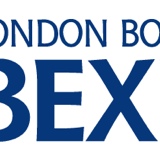Information
-
Audit Title
-
Client / Site
-
Conducted on
-
Prepared by
-
Location
-
Personnel
-
Disclaimer The purpose of this fire risk assessment is to evaluate the current fire safety arrangements in place. This assessment details recommendations and measures in order to demonstrate compliance with The Regulatory Reform (Fire Safety) Order 2005. Legislation used in carrying out this assessment included- Building Regulations PAS 79 2012 HM Government CLG Guide This report only addresses those parts of the building which were accessible at the time of the inspection it did not cover roof voids, compartmentalisation above ceiling ducts, cabling, separation etc. Confidentiality Statement In order to maintain the integrity and credibility of the risk assessment processes and to protect the parties involved, it is understood that the assessors will not divulge to unauthorized persons any information obtained during this risk assessment unless legally obligated to do so.
REGULATORY REFORM (FIRE SAFETY) ORDER 2005 FIRE RISK ASSESSMENT
-
Image of the premises
-
Responsible person (e.g. employer) or person having control of the premises
-
Assessor
-
Date of fire risk assessment
-
Disclaimer
The purpose of this fire risk assessment is to evaluate the current fire safety arrangements in place. This assessment details recommendations and measures in order to demonstrate compliance with The Regulatory Reform (Fire Safety) Order 2005.
Legislation used in carrying out this assessment included- Building Regulations
PAS 79 2012
HM Government CLG Guide
This report only addresses those parts of the building which were accessible at the time of the inspection it did not cover roof voids, compartmentalisation above ceiling ducts, cabling, separation etc.
Confidentiality Statement
In order to maintain the integrity and credibility of the risk assessment processes and to protect the parties involved, it is understood that the assessors will not divulge to unauthorized persons any information obtained during this risk assessment unless legally obligated to do so. -
Assessor signature
GENERAL INFORMATION
1. THE PREMISES
-
1.1 Number of floors
-
1.2 Approximate floor area
-
1.3 Brief details of construction
-
1.4 Use of premises
2. The Occupants
-
2.1 Approximate maximum number
-
2.2 Approximate number of employees at any one time
-
2.3 Maximum number of members of the public at any one time
-
2.4 Associated times/hours of occupation
3. OCCUPANTS ESPECIALLY AT RISK FROM FIRE
-
3.1 Sleeping occupants
-
3.2 Disabled occupants
-
3.3 Occupants in remote areas and lone workers
-
3.4 Young persons
-
3.5 Others
4. FIRE LOSS EXPERIENCE
5. OTHER RELEVANT INFORMATION
6. RELEVANT FIRE SAFETY LEGISLATION
-
6.1 The following fire safety legislation applies to these premises
-
6.2 The above legislation is enforced by
-
6.3 Other legislation that makes significant requirements for fire precautions in these premises (other than the Building Regulation 2010)
-
6.4 The legislation to which 6.3 makes reference is enforced by
-
6.5 Comments
FIRE HAZARDS AND THEIR ELIMINATION OR CONTROL
7. ELECTRICAL SOURCES OF IGNITION
-
7.1 Reasonable measures taken to prevent fires of electrical
-
7.2 Fixed installation periodically inspected and tested
-
7.3 Portable appliance testing (where appropriate) carried out
-
7.4 Suitable policy regarding the use of personal electrical appliances
-
7.5 Suitable limitation of trailing leads and adapters
8. SMOKING
-
8.1 Reasonable measures taken to prevent fires as a result of smoking
-
8.2 Smoking prohibited on the premises
-
8.3 Smoking prohibited in appropriate areas
-
8.4 Suitable arrangements for those who wish to smoke
-
8.5 This policy appeared to be observed at time of inspection
9. ARSON
-
9.1 Does basic security against arson by outsiders appear reasonable
-
9.2 Is there an absence of unnecessary fire load in close proximity to the premises or available for ignition by outsiders
10. PORTABLE HEATERS AND HEATING INSTALLATIONS
-
10.1 Is the use of portable heaters avoided as far as practicable
-
10.2 If portable heaters are used is the use of the more hazardous type ( e.g. radiant bar fires or lpg appliances) avoided
-
10.3 If portable heaters are used are suitable measures taken to minimise the hazard of ignition of combustible materials
-
10.4 Are fixed heating installations subject to regular maintenance
11. COOKING
-
11.1 Are reasonable measures taken to prevent fires as a result of cooking
-
11.2 Filters changed and ductwork cleaned regularly
-
11.3 Suitable extinguishing appliances available
12. LIGHTNING
-
12.1 Do the premises have a lightning protection system
13. HOUSEKEEPING
-
13.1 Is the standard of housekeeping adequate
-
13.2 Combustible materials appear to be separated from ignition sources
-
13.3 Avoidance of unnecessary accumulation of combustible materials or waste
-
13.4 Appropriate storage of hazardous materials
-
13.5 Avoidance of inappropriate storage of combustible materials
14. HAZARDS INTRODUCED BY OUTSIDE CONTRACTORS AND BUILDING WORKS
-
14.1 Are fire safety conditions imposed on outside contractors
-
14.2 Is there satisfactory control over works carried out on the premises by outside contractors (including "hot work" permits)
-
14.3 If there are in-house maintenance personnel, are suitable precautions taken during "hot work", including use of "hot work" permits
15. DANGEROUS SUBSTANCES
-
15.1 Are the general fire precautions adequate to address the hazards associated with dangerous substances used or stored within the premises
-
15.2 If 15.1 applies, has a specific risk assessment been carried out, as required by the Dangerous Substances and Explosive Atmospheres Regulations 2002
16. OTHER SIGNIFICANT FIRE HAZARDS THAT WARRANT CONSIDERATION INCLUDING PROCESS HAZARDS THAT IMPACT ON GENERAL FIRE PRECAUTIONS
-
16.1 Hazards
FIRE PROTECTION MEASURES
17. MEANS OF ESCAPE FROM FIRE
-
17.1 It is considered that the premises are provided with reasonable means of escape in case of fire
-
17.2 Adequate design of escape routes
-
17.3 Adequate provision of exits
-
17.4 Exits easily and immediately openable where necessary
-
17.5 Fire exits open in direction of escape where necessary
-
17.6 Avoidance of sliding or revolving doors as fire exits where necessary
-
17.7 Satisfactory means for securing exits
-
17.8 Reasonable distances of travel where there is a single direction of travel
-
17.9 Reasonable distances of travel where there are alternative means of escape
-
17.10 Suitable protection of escape routes
-
17.11 Suitable fire precautions for all inner rooms
-
17.12 Escape routes unobstructed
-
17.13 It is considered that the premises are provided with reasonable arrangements for means of escape for disabled people
18. MEASURES TO LIMIT FIRE SPREAD AND DEVELOPMENT
-
18.1 It is considered that there is compartmentation of a reasonable standard
-
18.2 It is considered that there is reasonable limitation of linings that might promote fire spread
-
18.3 As far as can reasonably be ascertained, fire dampers are provided as necessary to protect critical means of escape against passage of fire, smoke and combustion products in the early stages of a fire
19. EMERGENCY ESCAPE LIGHTING
-
19.1 Reasonable standard of emergency escape lighting system provided
20. FIRE SAFETY SIGNS AND NOTICES
-
20.1 Reasonable standard of fire safety signs and notices
21. MEANS OF GIVING WARNING IN CASE OF FIRE
-
21.1 Reasonable manually operated electrical fire alarm system provided
-
21.2 Automatic fire detection provided
-
21.3 Extent of automatic fire detection generally appropriate for the occupancy and fire risk
-
21.4 Remote transmission of alarm signals
22. MANUAL FIRE EXTINGUISHING APPLIANCES
-
22.1 Reasonable provision of portable fire extinguishers
-
22.2 Hose reels provided
-
22.3 Are all fire extinguishing appliances readily accessible
23. RELEVANT AUTOMATIC FIRE EXTINGUISHING SYSTEMS
-
23.1 Type of system
24. OTHER RELEVANT FIXED SYSTEMS AND EQUIPMENT
-
24.1 Type of fixed system
-
24.2 Comments
-
24.3 Suitable provision of fire-fighters switch(es) for high voltage luminous tube signs, etc.
MANAGEMENT OF FIRE SAFETY
25. PROCEDURES AND ARRANGEMENTS
-
25.1 Fire safety is managed by
-
25.2 Competent person(s) appointed to assist in undertaking the preventative and protective measures (i.e. Relevant general fire precautions)
-
25.3 Is there a suitable record of the safety arrangements
-
25.4 Appropriate fire procedures in place
-
25.5 Are procedures in the event of fire appropriate and properly documented
-
25.6 Are there suitable arrangements for summoning the fire and rescue service
-
25.6 Are there suitable arrangements to meet the fire and rescue service on arrival and provide relevant information, including that relating to hazards to fire-fighters
-
25.7 Are there suitable arrangements for ensuring that the premises have been evacuated
-
25.8 Is there a suitable fire assembly point(s)
-
25.9 Are there adequate procedures for evacuation of any disabled people who are likely to be present
-
25.10 Persons nominated and trained to use fire extinguishing appliances
-
25.11 Persons nominated and trained to assist with evacuation, including evacuation of disabled people
-
25.12 Appropriate liaison with fire and rescue service (e.g. by fire and rescue service crews visiting for familiarisation and information gathering)
-
25.13 Routine in-house inspections of fire precautions (e.g. In the course of health and safety inspections)
26. TRAINING AND DRILLS
-
26.1 Are all staff given adequate fire safety instruction and training on induction
-
26.2 Are all staff given adequate periodic "refresher training" at suitable intervals
-
26.3 Does all staff training provide information, instruction or training on the following:
-
Fire risks in the premises
-
The fire safety measures on the premises
-
Action in the event of fire
-
Action on hearing the fire alarm signal
-
Method of operation of manual call points
-
Location and use of fire extinguishers
-
Means for summoning the fire and rescue service
-
Identity of persons nominated to assist with evacuation
-
Identity of persons nominated to use fire extinguishing appliances
-
26.4 Are staff with special responsibilities (e.g. fire wardens) given additional training
-
26.5 Are fire drills carried out at appropriate intervals
-
26.6 When the employees of another employer work in the premises:
-
Is their employer given appropriate information (e.g. on fire risks and general fire precautions)
-
Is it ensured that the employees are provided with adequate instructions and information
27. TESTING AND MAINTENANCE
-
27.1 Adequate maintenance of premises
-
27.2 Weekly testing and periodic servicing of fire detection and alarm system
-
27.3 Monthly and annual testing routines for emergency escape lighting
-
27.4 Annual maintenance of fire extinguishing appliances
-
27.5 Periodic inspection of external escape staircases and gangways
-
27.6 Six-monthly inspection and annual testing of rising mains
-
27.7 Weekly and monthly testing, six-monthly inspection and annual testing of fire-fighting lifts
-
27.8 Weekly testing and periodic inspection of sprinkler installations
-
27.9 Routine checks of final exit doors and/or security fastenings
-
27.10 Annual inspection and test of lightning protection system
-
27.11 Are suitable systems in place for reporting and subsequent restoration of safety measures that have fallen below standard
-
27.12 Other relevant inspections or tests
28. RECORDS
-
28.1 Appropriate records of:
-
Fire drills
-
Fire training
-
Fire alarm tests
-
Emergency escape lighting tests
-
Maintenance and testing of other fire protection systems
FIRE RISK ASSESSMENT
-
Taking into account the fire prevention measures observed at the time of this risk assessment, it is considered that the hazard from fire (likelihood of fire) at these premises is:
- Low
- Medium
- High
-
In this context, a definition of the above term is as follows:
LOW Unusually low likelihood of fire as a result of negligible potential sources of ignition
MEDIUM Normal fire hazards (e.g. potential ignition sources) for this type of occupancy, with
fire hazards generally subject to appropriate controls (other than minor shortcomings)
HIGH Lack of adequate controls applied to one or more significant fire hazards, such as to
result in significant increase in likelihood of fire -
Taking into account the nature of the premises and the occupants, as well as the fire protection and procedural arrangements observed at the time of this fire risk assessment, it is considered that the consequences for life safety in the event of fire would be:
- Slight harm
- Moderate harm
- Extreme harm
-
In this context, a definition of the above term is as follows:
SLIGHT HARM Outbreak of fire unlikely to result in serious injury or death of any occupant
(other than an occupant sleeping in a room in which a fire occurs)
MODERATE HARM Outbreak of fire could foreseeably result in injury (including serious injury)
of one or more occupants, but it is unlikely to involve multiple fatalities
EXTREME HARM Significant potential for serious injury or death of one or more occupants -
Accordingly, it is considered that the risk to life from fire at these premises is: Trivial - No action is required and no detailed records need be kept. Tolerable - No major additional fire precautions required. However, there might be need for reasonably practicable improvements that involve minor or limited cost. Moderate - It is essential that efforts are made to reduce the risk. Risk reduction measures, which should take cost into account, should be implemented within a defined time period. Where moderate risk is associated with consequences that constitute extreme harm, further assessment might be required to establish more precisely the likelihood of harm as a basis for determining the priority for improved control measures. Substantial - Considerable resources might have to be allocated to reduce the risk. If the premises are unoccupied, it should not be occupied until the risk has been reduced. If the premises are occupied, urgent action should be taken. Intolerable - Premises (or relevant area) should not be occupied until the risk is reduced.
- Trivial
- Tolerable
- Moderate
- Substantial
- Intolerable
ACTION PLAN
-
ACTION PRIORITY
High - Action to be completed, implemented or arranged within one month. High priority actions do not always indicate an imminent risk. They can relate to actions that are able to be implemented in a short period with little to no cost in terms of time and effort (i.e. carrying out and recorded routine inspections of the premises)
Medium - Action to be completed, implemented or arranged within six months. These actions can vary in importance and risk. It is recognised that time, cost and effort need to be considered as part of the planning, organising and carrying out of these actions.
Low - Action to be completed, implemented or arranged within twelve months. These actions can vary in importance, but in most cases the risk is considered tolerable. The carrying out of these actions may be long term or infrequent, so an extended period of time is allocated for each. -
Item 1
-
Recommendations
-
Action Priority
- Low
- Medium
- High
-
Action Completed (Name and Date)
-
Item 2
-
Recommendations
-
Action Priority
- Low
- Medium
- High
-
Action Completed (Name and Date)
-
Item 3
-
Recommendations
-
Action Priority
- Low
- Medium
- High
-
Action Completed (Name and Date)
-
Item 4
-
Recommendations
-
Action Priority
- Low
- Medium
- High
-
Action Completed (Name and Date)
-
Item 5
-
Recommendations
-
Action Priority
- Low
- Medium
- High
-
Action Completed (Name and Date)
-
Item 6
-
Recommendations
-
Action Priority
- Low
- Medium
- High
-
Action Completed (Name and Date)
-
Item 7
-
Recommendations
-
Action Priority
- Low
- Medium
- High
-
Action Completed (Name and Date)
-
Item 8
-
Recommendations
-
Action Priority
- Low
- Medium
- High
-
Action Completed (Name and Date)
-
Item 9
-
Recommendations
-
Action Priority
- Low
- Medium
- High
-
Action Completed (Name and Date)
-
Item 10
-
Recommendations
-
Action Priority
- Low
- Medium
- High
-
Action Completed (Name and Date)
-
Item 11
-
Recommendations
-
Action Priority
- Low
- Medium
- High
-
Action Completed (Name and Date)
-
Item 12
-
Recommendations
-
Action Priority
- Low
- Medium
- High
-
Action Completed (Name and Date)
-
Item 13
-
Recommendations
-
Action Priority
- Low
- Medium
- High
-
Action Completed (Name and Date)
-
Item 14
-
Recommendations
-
Action Priority
- Low
- Medium
- High
-
Action Completed (Name and Date)
-
Item 15
-
Recommendations
-
Action Priority
- Low
- Medium
- High
-
Action Completed (Name and Date)
-
Item 16
-
Recommendations
-
Action Priority
- Low
- Medium
- High
-
Action Completed (Name and Date)
-
Item 17
-
Recommendations
-
Action Priority
- Low
- Medium
- High
-
Action Completed (Name and Date)
-
Item 18
-
Recommendations
-
Action Priority
- Low
- Medium
- High
-
Action Completed (Name and Date)
-
Item 19
-
Recommendations
-
Action Priority
- Low
- Medium
- High
-
Action Completed (Name and Date)
-
Item 20
-
Recommendations
-
Action Priority
- Low
- Medium
- High
-
Action Completed (Name and Date)











